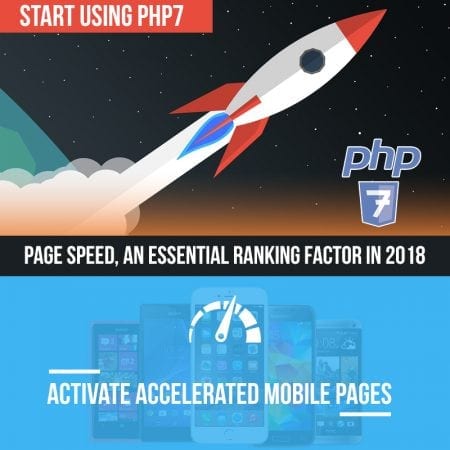 In 2017, Google announced that website speed will be one of the most important ranking factors in its mobile-first index, as more than 50% of searches are now done through mobile devices. Obviously, webmasters had to adapt to this, making their websites as fast and accessible as possible. Or, if you prefer, put some serious effort in mobile SEO.
In 2017, Google announced that website speed will be one of the most important ranking factors in its mobile-first index, as more than 50% of searches are now done through mobile devices. Obviously, webmasters had to adapt to this, making their websites as fast and accessible as possible. Or, if you prefer, put some serious effort in mobile SEO.
And the trend continues in 2018.
Over the past years, we were ‘warned’ several times that mobile will somehow take over the world and now we’re seeing this happening. Yes, desktops are still being used a lot, but smartphones are becoming more and more advanced, packing enough processing power to fully replace PCs. Actually, we have small computers in our pockets, so we’re using them for all possible tasks.
In this case, you should be aware of one important aspect: if you want to keep up with your competitors, you need to make sure that your website loads fast. After all, a visitor has an attention span of just three seconds. At this time, your site needs to load and convince him or her that it’s worth scrolling a bit.
Ok, but how can I improve website speed?
Ah, good question. The good news is that it’s far from being rocket science since there are a few easy things you can do and end up with a speedy website.
Activate AMP
Since Google insisted with page speed that much, it would’ve been weird if they didn’t provide some tips on how to improve it as well. Thus, the AMP project was born, in order to give the web a nice speed boost.
The search engine giant provides all documentation on how to implement Accelerated Mobile Pages on your website, but you can also do it through a plugin if you have a WordPress-based website. After this, those who access your website through a smartphone or a tablet will see a simplified version of it, containing just the essential information. But man, that page will load fast!
Start using PHP7
Sticking to websites built upon WordPress, another essential recommendation for those looking forward to improving website speed is to consider using PHP7. Most websites are relying on PHP 5.2 or 5.3, which relatively slow versions.
One of the aspects that make PHP7 so special is the fact that it’s fast. The developers worked to refactor the PHP codebase, in an attempt to reduce memory consumption and increase performance. And guess what? They did an amazing job with this, as benchmarks show speeds twice as fast as on previous versions.
See how quick your pages render
A lot of webpages have elements that block them from rendering quickly. Going a bit into technical details, the critical rendering path consists of an object, like CSS and JavaScript, which needs to load before the content is shown on your screen. If this content is blocked, your page will load very slow or won’t load at all.
Start with running a PageSpeed Insights test and observe those elements preventing a page from rendering quickly.
These are just a few things you can try in order to improve website speed and expect some very quick results. However, you need some technical background if you want everything to go smoothly. Or you can leave it to ISEOU.
Thanks to the experience acquired after years of providing high-quality SEO services to small business, they can take meticulous care and effort to make sure that your website is as fast and responsive as possible, offering a top-notch user experience. And we all know that a great user experience can directly affect revenue!

